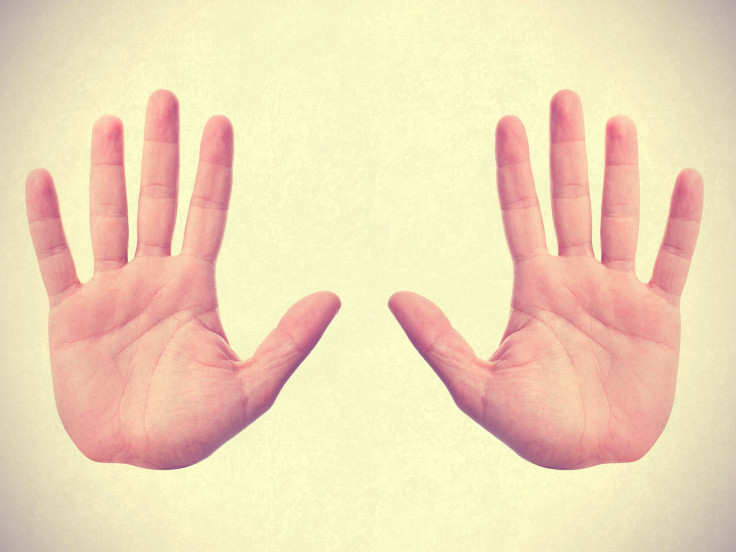Hand Specialist: How Your Fingers Can Predict Everything From Penis Size To Sexual Orientation

Cold hands, warm heart. Poor circulation has given me a body temperature on par with a corpse, so I hear this expression pretty much every time I touch another person. While the temperature of my hands actually has nothing to do with my heart, our hands are actually able to say a whole lot about our health, ranging from our sexuality to our personal risk of disease. Next time you want to know more about a person, you know where to look.
Big Hands, Big You Know What
Men (and women, for that matter) have been associating the size of a man’s penis with the size of his other various body parts, most likely since we evolved the ability to speak. For the most part, these associations are more or less unfounded, and characteristics such as height and shoe size are far less linked to penis size than we have been led to believe. However, LiveScience reports that, interestingly enough, the length of a man’s index finger is actually a pretty accurate hint of how much he’s packing down below.
The remarkable connection has been observed in many studies, but one of the most notable of these was done at Gachon University Gil Hospital in South Korea. Researchers measured the index fingers and penises of 144 volunteers and found that this link was quite consistent. The bigger the difference between a man’s index and ring finger, the bigger his penis was likely to be. While scientists are still quite unsure of exactly what causes this link, they believe that it may have something to do with prenatal hormone exposure.
Those Are Some Sexy Fingers
All this testosterone exposure in the womb isn’t just linked to a larger penis. It’s also associated with an overall more attractive male face. A study from the University of Geneva in Switzerland found that the ratio between a man’s index and ring finger is a good sign of how masculine his facial features are, and this of course nearly always predicted male attractiveness. "What we found was that 2D:4D ratio can predict face attractiveness. The more masculine the 2D:4D is, the more attractive is the face," Camille Ferdenzi, a researcher on the study, told LiveScience. The ratio is also linked to voice frequency, body odor, and quality of sperm.
Apart from revealing sexiness, fingers have also been found to give clues to an individual’s sexual orientation. The link between finger ratio and sexual orientation may be further proof that sexual orientation is not a choice but rather determined well before birth. One study found that, on average, gay men and women had smaller ratios than straight men and women, suggesting that sexual orientation may be partially influenced by prenatal testosterone levels.
“We can be pretty sure from a large number of human and animal studies that digit ratios are affected by prenatal testosterone exposure. So this result suggests a link between the hormones a baby is exposed to in the womb and their sexual orientation in adulthood," Psychology professor John Manning, from the University of Central Lancashire, told the BBC.
Risk Of Disease
While all this finger analysis may seem to favor men with a bigger difference between the index and ring finger, there is a bit of good news for men whose hands are more evenly shaped: You’re more likely to survive prostate cancer. According to Medical Daily, researchers in Korea found that men with shorter ring fingers, and thus less difference between the size of their ring and index fingers, respond better to anti-tumor drugs. Once again, this is all down to testosterone levels. Dutasteride is a prostate cancer drug that works by blocking the effects of testosterone on the prostate. Men with lower levels of testosterone require less blocking, and therefore it's more likely that the drug will work as needed.
Along with predicting a man’s response to prostate cancer medication, a finger can also predict a person’s risk for aorta stiffness, a common risk factor for heart disease. Gary Pierce, an assistant professor at the Department of Health and Human Physiology at the University of Iowa is behind the novel way to determine aortal health. The procedure involves placing a transducer on the finger or arm and combining the results with the person’s age and body mass index, Medical Daily reported.



























